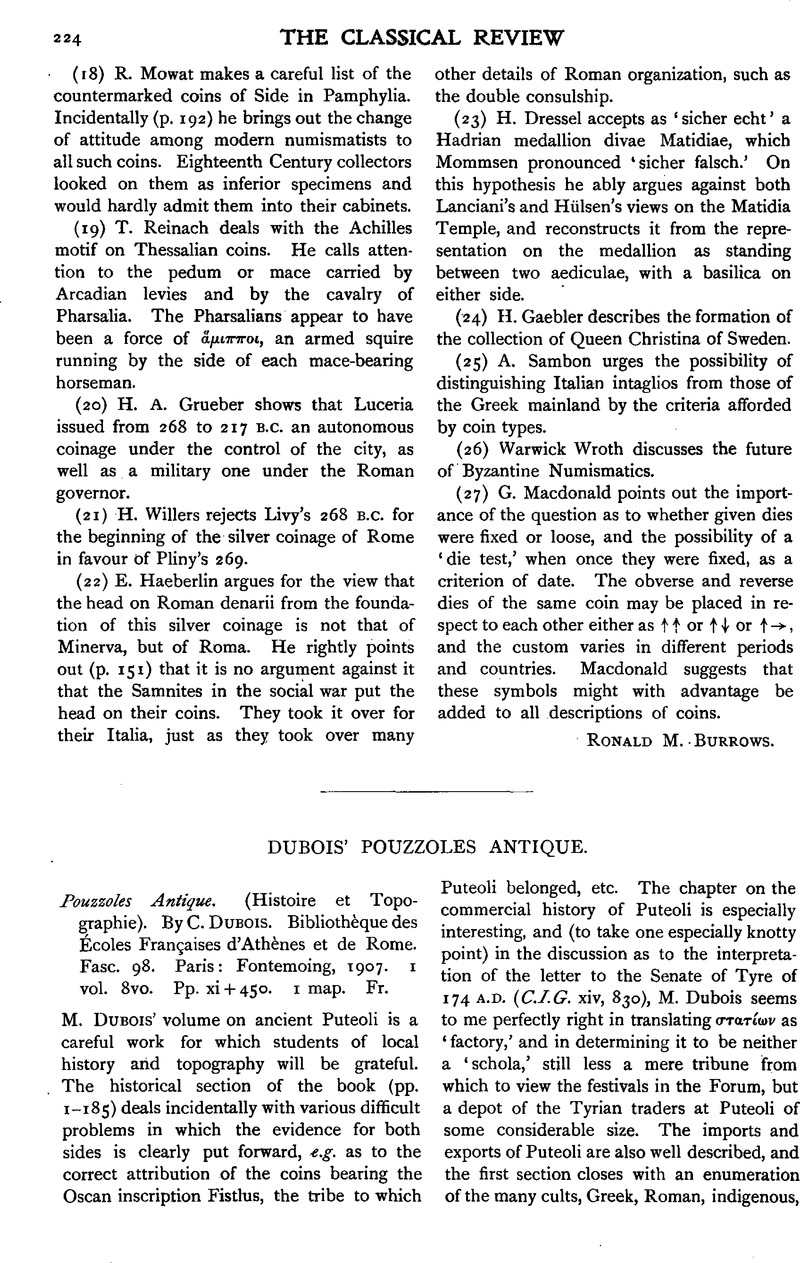No CrossRef data available.
Published online by Cambridge University Press: 27 October 2009

1 The original drawing by Francesco Bartoli is in the Topham Collection at Eton (Mahogany Case, No. 2).
2 It would have been interesting had M. Dubois attempted to discover the significance of the use by the agrimensores, who laid out the allotments of the colonists of Puteoli in 194 B.C., of a unit of measurement of 330 mètres (![]() Roman feet of 297 millimetres). It seems quite clear that it is derived from the subdivision of a square, the side of which measured 10,000 Roman feet, into 81 smaller squares by ten cross roads (including the sides of the square itself) each way. At Puteoli there is no room for the full development of this measure in either direction (unless we suppose that, from N.W. to S.E., the whole of the Monte Oliban (see map) was included), and it would be very interesting to know where it was first evolved. The system is quite contrary to Roman practice, in that it does not start from an intersection of a cardo and decumanus, which must produce an even number of squares.
Roman feet of 297 millimetres). It seems quite clear that it is derived from the subdivision of a square, the side of which measured 10,000 Roman feet, into 81 smaller squares by ten cross roads (including the sides of the square itself) each way. At Puteoli there is no room for the full development of this measure in either direction (unless we suppose that, from N.W. to S.E., the whole of the Monte Oliban (see map) was included), and it would be very interesting to know where it was first evolved. The system is quite contrary to Roman practice, in that it does not start from an intersection of a cardo and decumanus, which must produce an even number of squares.